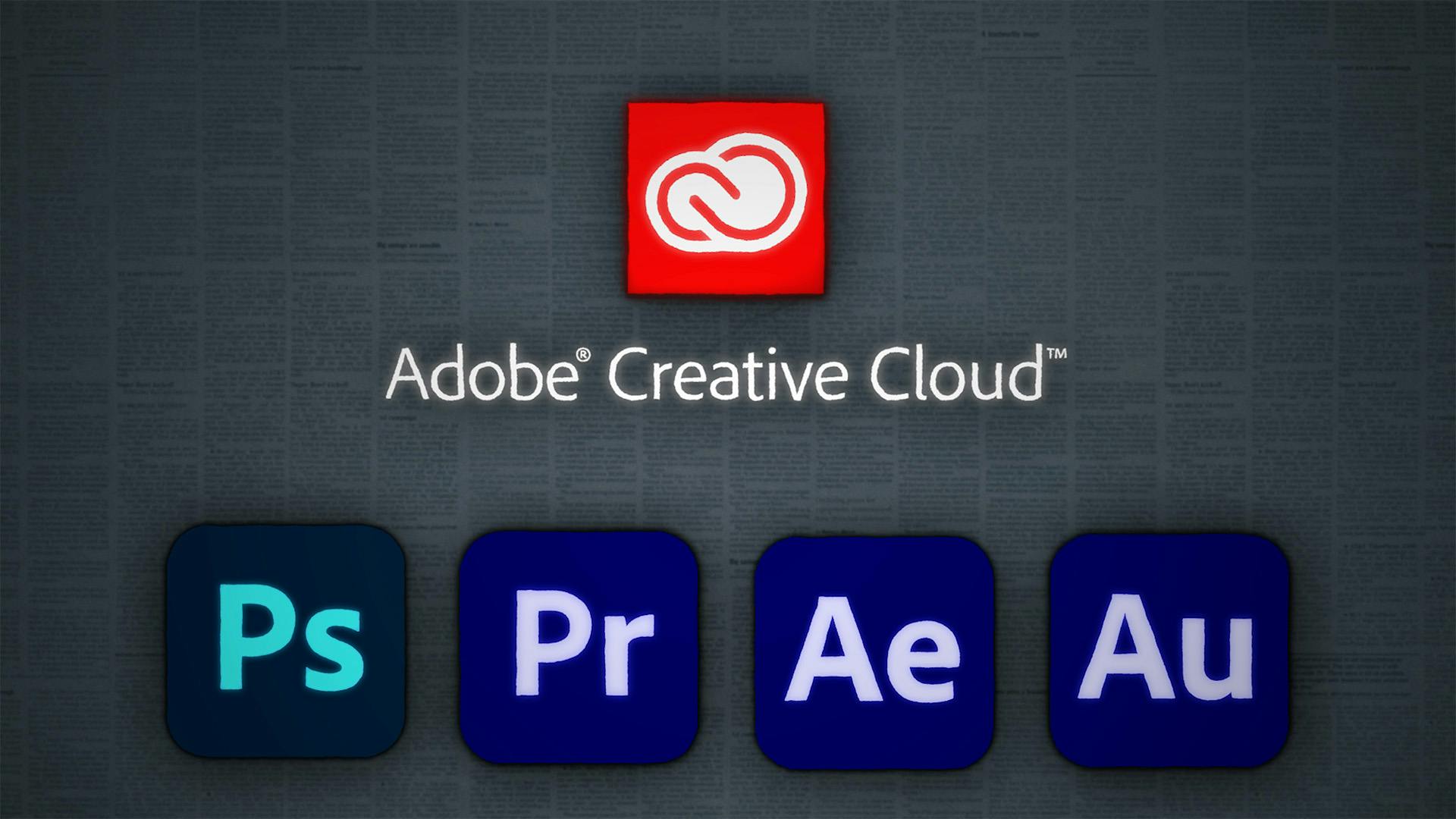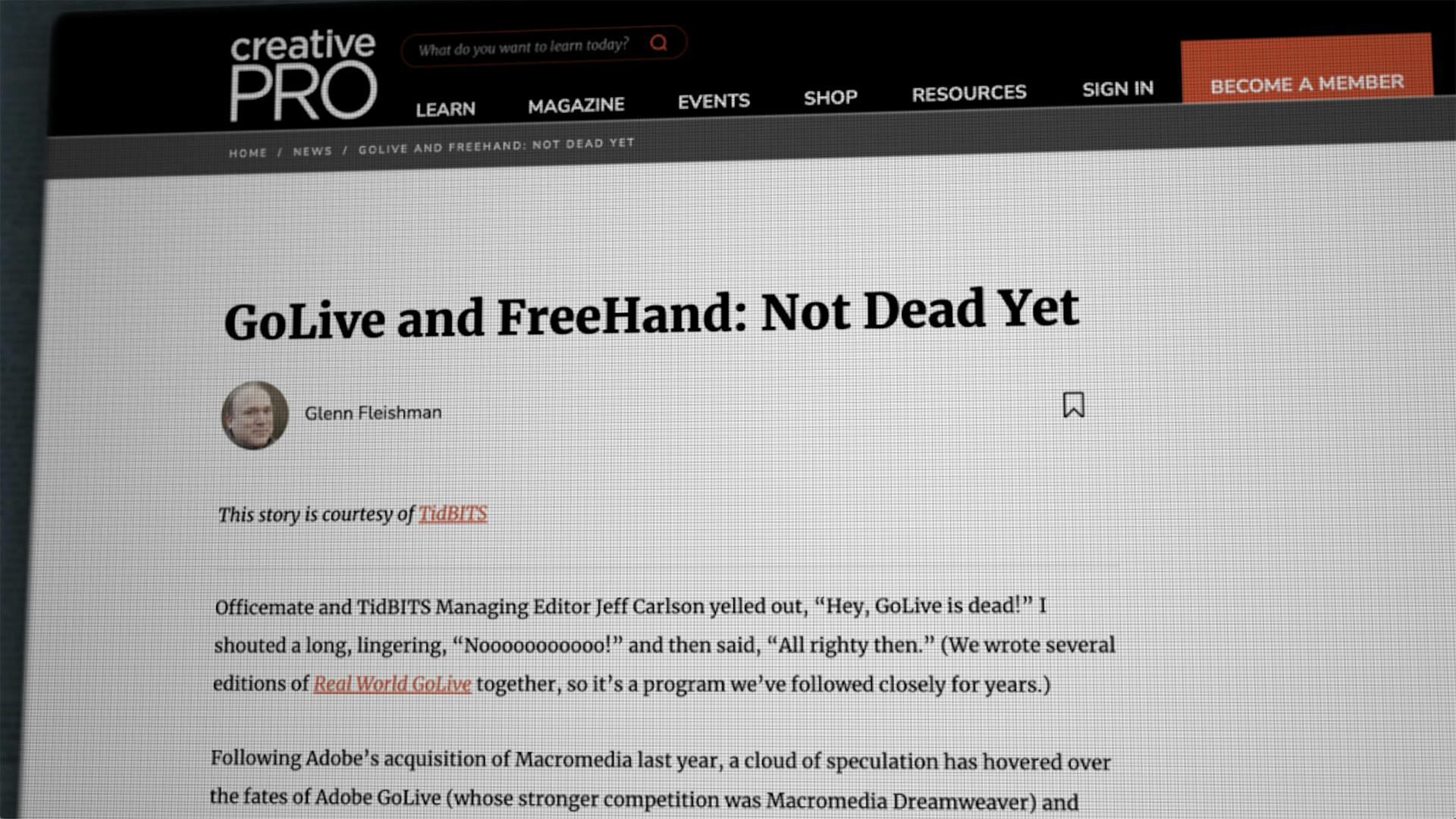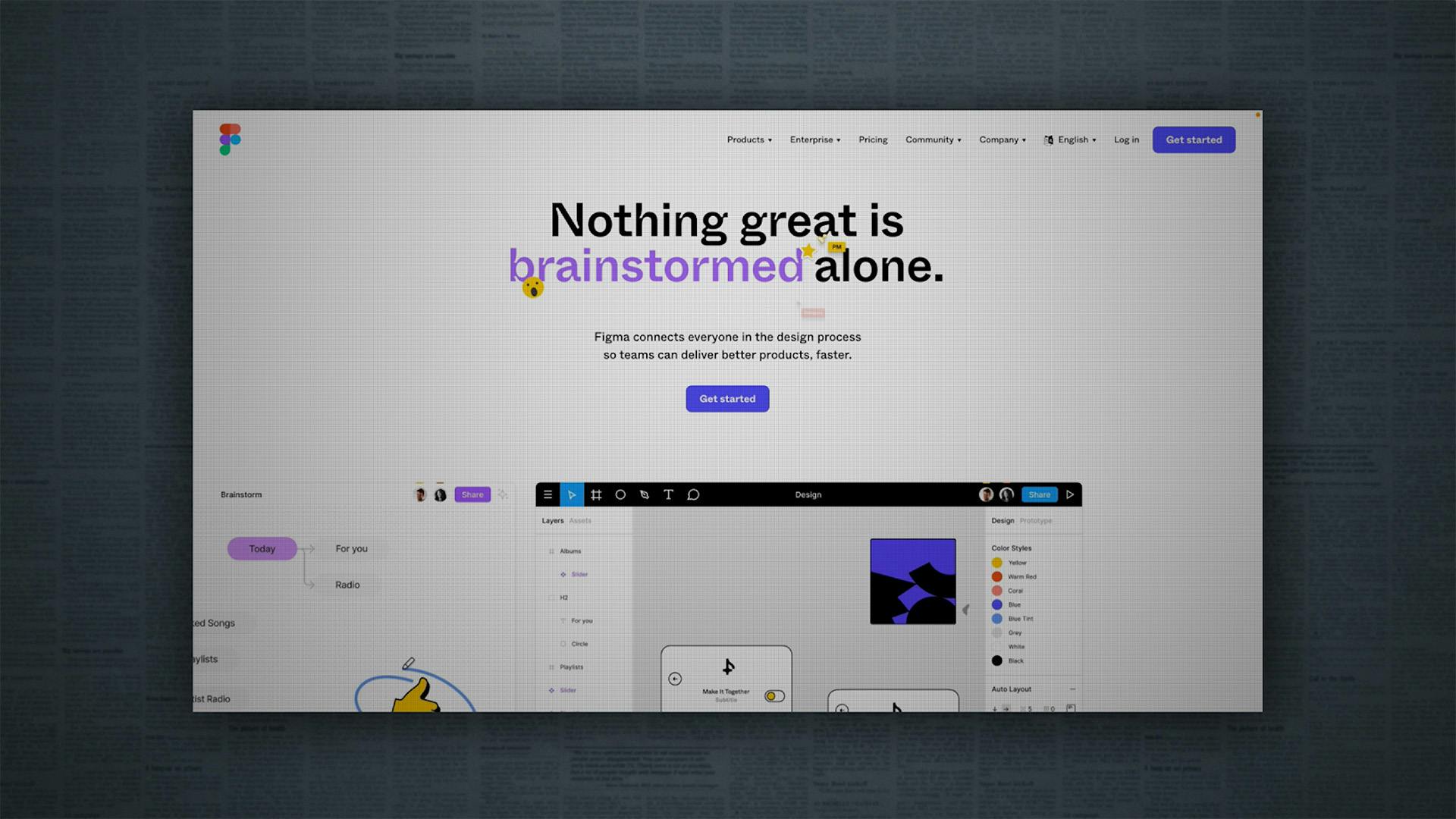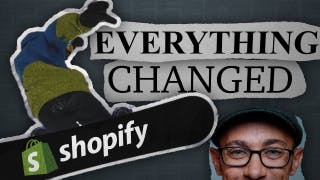
Why did Adobe Buy Figma?
Since 1982, Adobe has dominated the software market. Responsible for such products like Illustrator, Photoshop, After Effects, and inventing the PDF. But, what if I told you that half of those products I just listed were acquisitions? In fact, in its 40-year-plus existence, Adobe has acquired over 50 companies.
Just recently, Adobe announced they would spend $20 billion to acquire Figma, four times the price of their next highest purchase. History tells us that Adobe will adopt Figma as one of its own and that Figma fans have nothing to worry about in regards to the product being shut down. Or, does it? In this episode, we’re going to look at two key acquisitions made by Adobe that differ wildly with the eventual fate of the product. From there, we can draw insight on what lies ahead for Figma, Adobe, and the greater SaaS world.
Lessons from the Top
There's divided opinion about whether the Figma multi-billion acquisition is good for the SaaS industry. Lack of competition means Adobe continues to dominate the industry, and Figma will now have to succeed in concert with Adobe, not in spite of Adobe. Whether this acquisition will have a PhotoShop outcome or a FreeHand outcome, remains to be seen.
Experts warn, however, that if the current generation of SaaS startups keep entering into mergers and acquisitions with the same legacy companies, they'll never be able to break the hold that entrenched platform companies have over the enterprise software market.
Still, there's a lot we can learn from both Adobe and Figma.
- Adobe Today
Adobe is worth about $160 billion to date, and with its recent acquisition of Figma, it’s set to continue on that path. I think we can all agree that Adobe is a behemoth in the visual design industry. And whether you love it or hate it, one thing you can’t deny is that for the past 40 years Adobe has been very wise and forward-thinking when it comes to their business decisions.Every move and every acquisition, whether the objective was to eliminate the competition or expand its offering, it has been very strategic and has ensured its continued growth and expansion. - Figma
What we can learn from Figma is how far drive and focus can take you, even in a short period of time. Figma’s purpose wasn’t to compete with Adobe, its purpose was to create a product that made designing and collaboration easier and better. It succeeded and because of that it was able to take on Adobe and give it some serious competition — worth $20 billion.
Photoshop
In 1987, Thomas Knoll was attending the University of Michigan when he decided to distract himself from his studies with a coding project that would display grayscale images on a black and white monitor. He called this program “Display”. Thomas’ brother, John, worked for a little company known as Industrial Light and Magic (ILM). John asked Thomas if he could help him program a computer to process image files digitally, and Display seemed like a perfect starting point.
Thomas worked on Display adding all sorts of capabilities like color processing as well as the ability for users to change features like color balance, hue, and saturation. Thomas kept looking for a new name to use that would set the product apart but each time, the name appeared taken like ImagePro and PhotoHut. Eventually, the brothers settled on a name that would stick until this day: Photoshop.
John traveled all around Silicon Valley searching for an investor that would help them distribute the product. Eventually, it caught the attention of the executives at Adobe. At the time, Adobe was in agreement with a different image-editing program known as ColorStudio. Convinced that Photoshop was better, Adobe worked out an agreement with the Knoll brothers to distribute the product in return for royalties. It would function as a companion product for Adobe’s Illustrator, a vector graphics editor released in 1987.
Photoshop version 1.0 shipped in February of 1990 at a list price of $895 exclusively for Macintosh. This was before SaaS so the on-prem software would be iterated several times until its current form in the cloud.
Photoshop’s dominance was massive. It became a verb. I’m sure if I told you something is “shopped” you know exactly what I’m talking about. In 1995, Adobe bought out the Knoll brothers’ royalty agreement for $34.5 million. Adobe had clearly realized that acquiring Photoshop would be lucrative not only in dollars and cents, but also in the minds of its customers.

By adding Photoshop to Adobe’s product offering, they would create a strong foothold in the image processing industry. It became a bedrock for their creative ecosystem. Photoshop joined, in-house created video editor, Premiere, and was later itself joined by further acquisitions of After Effects and Audition. The Knoll brothers also benefited. In addition to their generous sum, they ended up working with Adobe for years after the acquisition. At the 2019 Oscars, the two received a Scientific and Engineering Award. But perhaps best of all, whenever you open the Photoshop program even to this day, you can still see their names.
But not all of Adobe’s acquisitions end up so rosy…
FreeHand
In 1988, two corporations, Aldus and Altsys, reached a licensing agreement to release a vector graphics editor named FreeHand, and graphics program, PhotoStyler. FreeHand and PhotoStyler competed with Adobe’s Illustrator and Photoshop respectively.
The firms tried to top one another by going back and forth with different feature releases over the next several years. The ensuing battle would not last long as in 1994 Adobe Systems announced that they had an agreement with Aldus Corporation to merge in a $525-million deal. But our acquisition of focus wouldn’t occur just yet. Because of the competition between their two main products, Altsys sued Aldus over a non-compete clause within the FreeHand licensing agreement.
FreeHand’s dedicated customer base had cause for concern as the merger would result in Adobe killing the PhotoStyler product, ending all competition with Photoshop. FreeHand users were assured by Altsys CEO and founder, James Von Ehr, that “no one loves FreeHand more than we do. We will do whatever it takes to see it survive.”
In October of 1994, The Federal Trade Commission ordered that Adobe divest FreeHand in order to prevent competition from ending. They further ordered that for a period of 10 years from the date on which this order became final, respondents shall not acquire any professional-illustration software or enter into any exclusive license with a professional-illustration software.
Altsys retained the rights to FreeHand but instead of keeping it in house, decided to sell it to a different company: Macromedia. Macromedia was able to bolster its product offerings and 200,000 FreeHand customers came with it. James Von Ehr joined as well, becoming a vice-president of Macromedia.
Over the next decade, Macromedia became Adobe’s new foe. Already supported by other competitive products like Flash and Dreamweaver, Macromedia had plenty of incentive to keep the game going. The two sparred back and forth, continuing the battle that Altsys had started years before. Meanwhile in 1997, James Von Ehr left Macromedia to start a new venture, which left the door open for something drastic to happen in 2005.

On April 18 of that year, Adobe announced they would acquire Macromedia in a stock swap of $3.4 billion. They had waited just over the 10-year limit imposed by the American government and with FreeHand champion, James Von Ehr, no longer present, users were on edge. In 2006, the FreeHand community protested Adobe's announcement of discontinuing development with the "FreeHand Support Page" petition. Soon after in 2007, the "FreeHand Must Not Die" petition was filed. Adobe assured users as late as June of 2006 that they continued to support FreeHand and develop it based on customer needs. But less than a year later, in May of 2007, Adobe announced the end of FreeHand.
Freehand users were incensed. In 2011, the Free Macromedia FreeHand Organization filed a civil antitrust complaint against Adobe Systems, Inc alleging that "Adobe has violated federal and state antitrust laws by abusing its dominant position in the professional vector graphic illustration software market."
In a bid to win over some of the protesters, Adobe opted for a settlement, where members of the Free Macromedia FreeHand Organization received a discount on Adobe products and a promise for product-development of Adobe Illustrator based on their requests. It was too late. FreeHand was finished.
Figma
As mentioned, Adobe has had dozens of acquisitions over the years, consistently topping billions of dollars. Photoshop and FreeHand were just two extreme examples of what Adobe is capable of. So now, let’s take a look at Figma.
In 2012, Dylan Field dropped out of Brown University and took $100,000 as a Thiel Fellow to start his own business. He was joined by fellow computer science student, Evan Wallace. Convinced that design is collaborative by nature, the two focused primarily on moving the process to the cloud and allowing maximum flexibility for teams to collaborate.

After launching in December 2015, Field asserted in a Tech Crunch Interview that his big competitor "doesn't understand collaboration" and the Adobe Creative Cloud is "really cloud in name only." He further noted that "Design is undergoing a monumental shift — going from when design was at the very end of the product cycle, where people would just make things prettier to now, where it runs through the entire process." The goal at Figma was to do for interface design what Google Docs did for text editing. And that's precisely what he did.
Over the years — and especially after the 2013 deprecation of Adobe Fireworks, more and more UX designers felt that the creative Cloud did not match market expectations. While Photoshop and Illustrator were powerful programs in their own right, they lack the in-browser functionality of Figma.
In the years that followed its launch, Figma built out the platform to expand access and usability for individual designers, small firms, and giant enterprise companies alike. The company launched plug-ins in 2019, allowing developers to optimize work, be faster, and more creative. Figma launched an educational platform called Community, which allows designers to publish their work for others to view, remix, and learn from.
Adobe tried to compete with their own product, Adobe XD that they launched in 2016, but whether through a lack of focus or not enough dedicated resources, they couldn’t compete.
By 2021, Figma was well and truly the king of the web-based design world, and by some distance. Among over 3,000 surveyed by UX Tools in 2021, Figma was the preferred UI design tool at 77%, up from just 11% in 2017. This is compared to Adobe XD, which has never cracked 25%.

In June of 2021, Figma had a valuation of $10 billion, quintupling its price tag from the previous year. But a few months later, Adobe proposed a deal to purchase Figma at twice that price in what is one of the biggest software deals in history. So what does this mean for Figma fans and the SaaS world?
Reasons for concern
With our two previous examples in Photoshop and FreeHand, we see contrasting stories. With Photoshop, Adobe incorporated it into their core offering and treated it as one of their own with its creator staying on to oversee the development of the product. I bet a few of you were surprised to hear that Photoshop was an acquisition in the first place. Additionally, there wasn’t much competition at the time, the folks at Adobe simply realized the potential for the software and capitalized on it.
With FreeHand, we see a multi-decade battle of Adobe zeroing in on its competition and tactically dismantling it in favor of its own, even with the promise to keep it going. And it wasn’t the only time Adobe has done this.
Adobe realized the potential with Figma, just like all the acquisitions they made before. They have a consistent track record of hitting on heavy bets as to where software and SaaS is going even if they weren’t the ones to develop the product themselves.
Many designers worry that Adobe won't let Figma flourish — as was the case with FreeHand. It's also one of the strongest rivals to Adobe XD, which hasn't been able to keep pace with Figma's innovations. In particular, there are concerns that Adobe's acquisition could result in Figma slowly shutting down its free membership, alongside losing the freedom to develop independently from Adobe.
Dylan Field is trying his best to ease concerns. In an interview with The Verge, he assured Figma users that he was going nowhere and that Figma was poised for even more growth inside Adobe. He explained, "First of all, we're gonna give our users a ton more functionality…There's not a price increase here — we're doing everything we can to keep prices the same… We're gonna continue to not just innovate, but innovate quickly… And that's a challenge, but it's one I'm down to sign up for."
Only time will tell if Figma will be a Photoshop or a FreeHand.
Summary
In general, there's divided opinion about whether this multi-billion acquisition is good for the SaaS industry. Lack of competition means Adobe can get away with a subpar product. Figma will now have to succeed in concert with Adobe, not in spite of Adobe. Hopefully Dylan Field sticks around in order to avoid a similar situation with FreeHand an James Von Ehr
Experts warn that the current generation of SaaS startups will never be able to break the hold that entrenched platform companies have over the enterprise software market, if they keep entering into mergers and acquisitions with the same legacy companies.
Will there be a new Adobe, Google, or Salesforce, or are all SaaS companies destined to be acquired by those who came before? Let us know what you think.
Do us a favor?
Part of the way we measure success is by seeing if our content is shareable. If you got value from this episode and write up, we'd appreciate a share on Twitter or LinkedIn.
1
00:00:00,210 --> 00:00:01,043
- Adobe.
- Adobe.
2
00:00:01,043 --> 00:00:02,670
- Adobe.
- Adobe will acquire
3
00:00:02,670 --> 00:00:04,710
rival design platform, Figma.
4
00:00:04,710 --> 00:00:08,100
- Since 1982, Adobe has
dominated the software market,
5
00:00:08,100 --> 00:00:10,950
responsible for such products
like Illustrator, Photoshop,
6
00:00:10,950 --> 00:00:13,593
After Effects, and even
inventing the .pdf.
7
00:00:14,490 --> 00:00:16,470
But what if I told you
that half of those products
8
00:00:16,470 --> 00:00:19,380
that I just listed were acquisitions?
9
00:00:19,380 --> 00:00:21,660
In fact, in its 40-year plus existence,
10
00:00:21,660 --> 00:00:24,510
Adobe has acquired over 50 companies.
11
00:00:24,510 --> 00:00:25,830
Just recently, Adobe announced
12
00:00:25,830 --> 00:00:28,800
that they would spend $20
billion to acquire Figma,
13
00:00:28,800 --> 00:00:31,470
four times the price of
their next highest purchase,
14
00:00:31,470 --> 00:00:33,900
and history tells us that
Adobe will adopt Figma
15
00:00:33,900 --> 00:00:35,640
as one of its own, and Figma fans
16
00:00:35,640 --> 00:00:36,960
have nothing to worry about
17
00:00:36,960 --> 00:00:41,580
in regards to the product
being shut down, or do they?
18
00:00:41,580 --> 00:00:43,980
In this episode, we're gonna
look at two key acquisitions
19
00:00:43,980 --> 00:00:45,780
made by Adobe that differ wildly
20
00:00:45,780 --> 00:00:48,120
with the eventual fate of the product.
21
00:00:48,120 --> 00:00:50,490
From there, we can draw
insight on what lies ahead
22
00:00:50,490 --> 00:00:54,000
for Figma, Adobe, and
the greater SaaS world.
23
00:00:54,000 --> 00:00:56,553
I'm Ben Hillman, and this is Verticals.
24
00:00:59,400 --> 00:01:01,470
In 1987, Thomas Knoll was attending
25
00:01:01,470 --> 00:01:03,420
the University of Michigan when he decided
26
00:01:03,420 --> 00:01:06,690
to distract himself from his
studies with a coding project
27
00:01:06,690 --> 00:01:08,490
that would display gray scale images
28
00:01:08,490 --> 00:01:10,230
on a black and white monitor.
29
00:01:10,230 --> 00:01:12,660
He called this program "Display."
30
00:01:12,660 --> 00:01:15,660
Thomas' brother John worked
for a little known company
31
00:01:15,660 --> 00:01:19,350
known as Industrial
Light and Magic, or ILM.
32
00:01:19,350 --> 00:01:21,330
John asked Thomas if he could help him
33
00:01:21,330 --> 00:01:24,690
program a computer to process
image files digitally,
34
00:01:24,690 --> 00:01:27,750
and Display seemed like
a perfect starting point.
35
00:01:27,750 --> 00:01:28,770
Thomas worked on Display,
36
00:01:28,770 --> 00:01:31,530
adding all sorts of capabilities
like color processing,
37
00:01:31,530 --> 00:01:33,840
as well as the ability for
users to change features
38
00:01:33,840 --> 00:01:36,510
like color balance, hue, and saturation.
39
00:01:36,510 --> 00:01:38,490
Eventually, the brothers settled on a name
40
00:01:38,490 --> 00:01:41,820
that would stick until
this day, Photoshop.
41
00:01:41,820 --> 00:01:43,500
Eventually, it caught the attention
42
00:01:43,500 --> 00:01:45,240
of the executives at Adobe.
43
00:01:45,240 --> 00:01:47,550
Adobe worked out an agreement
with the Knoll brothers
44
00:01:47,550 --> 00:01:50,130
to distribute the product
in exchange for royalties.
45
00:01:50,130 --> 00:01:52,350
Photoshop would function
as a companion product
46
00:01:52,350 --> 00:01:55,650
for Adobe's Illustrator, which
was a vector graphics editor
47
00:01:55,650 --> 00:01:57,270
released in 1987.
48
00:01:57,270 --> 00:02:01,470
And so, Photoshop version 1.0
shipped in February of 1990
49
00:02:01,470 --> 00:02:05,913
at a list price of $895
exclusively for the Macintosh.
50
00:02:07,549 --> 00:02:10,080
Photoshop's dominance was massive.
51
00:02:10,080 --> 00:02:12,540
In 1995, Adobe bought
out the Knoll Brothers'
52
00:02:12,540 --> 00:02:15,363
royalty agreement for $34.5 million.
53
00:02:16,380 --> 00:02:18,900
Photoshop joined in-house
created video editor Premier
54
00:02:18,900 --> 00:02:21,420
and was later itself joined
by further acquisitions
55
00:02:21,420 --> 00:02:23,580
of motion graphics editor After Effects,
56
00:02:23,580 --> 00:02:25,440
and audio program Audition.
57
00:02:25,440 --> 00:02:27,090
Eventually, these products will become
58
00:02:27,090 --> 00:02:30,210
the foundation to Adobe's
core SaaS offering,
59
00:02:30,210 --> 00:02:31,860
Adobe Creative Cloud.
60
00:02:31,860 --> 00:02:33,570
The Knoll brothers also benefited.
61
00:02:33,570 --> 00:02:35,490
In addition to their generous sum,
62
00:02:35,490 --> 00:02:36,720
they ended up working with Adobe
63
00:02:36,720 --> 00:02:38,910
for years after the acquisition,
64
00:02:38,910 --> 00:02:40,770
and in 2019, the two received
65
00:02:40,770 --> 00:02:43,260
a scientific and engineering
award at the Oscars.
66
00:02:43,260 --> 00:02:45,540
But perhaps best of all
is whenever you open
67
00:02:45,540 --> 00:02:48,030
the Photoshop program, even to this day,
68
00:02:48,030 --> 00:02:50,250
you can still see the brothers' names.
69
00:02:50,250 --> 00:02:53,790
But not all of Adobe's
acquisitions have ended up so rosy.
70
00:02:53,790 --> 00:02:57,300
In 1988, 2 corporations,
Aldus and Altsys reached a
71
00:02:57,300 --> 00:03:00,150
licensing agreement to release
a vector graphics editor
72
00:03:00,150 --> 00:03:04,350
named Freehand and a graphics
program, PhotoStyler.
73
00:03:04,350 --> 00:03:06,390
Freehand and PhotoStyler competed with
74
00:03:06,390 --> 00:03:09,060
Adobe's Illustrator and
Photoshop respectively.
75
00:03:09,060 --> 00:03:12,090
In 1994, Adobe Systems announced
that they had an agreement
76
00:03:12,090 --> 00:03:17,090
with Aldus Corporation to
merge in a $525 million deal,
77
00:03:17,490 --> 00:03:19,950
but this isn't our acquisition of focus.
78
00:03:19,950 --> 00:03:23,160
Altsys sued Aldus over
a non-compete clause
79
00:03:23,160 --> 00:03:25,740
within the Freehand licensing agreement.
80
00:03:25,740 --> 00:03:29,160
Freehand users were assured
by Altsys CEO and founder
81
00:03:29,160 --> 00:03:32,970
James Van Ayer that "No one
loves Freehand more than we do.
82
00:03:32,970 --> 00:03:35,670
We will do whatever it
takes to see it survive"
83
00:03:35,670 --> 00:03:39,330
and Freehand's dedicated customer
base had cause for concern
84
00:03:39,330 --> 00:03:41,040
as the merger would result in Adobe
85
00:03:41,040 --> 00:03:43,290
killing the PhotoStyler product,
86
00:03:43,290 --> 00:03:45,270
ending competition with Photoshop.
87
00:03:45,270 --> 00:03:48,030
In October of 1994, the
Federal Trade Commission
88
00:03:48,030 --> 00:03:51,120
ordered that Adobe divest
Freehand in order to prevent
89
00:03:51,120 --> 00:03:54,127
competition from ending
for a period of 10 years.
90
00:03:54,127 --> 00:03:56,880
"From the date on which
this order becomes final,
91
00:03:56,880 --> 00:03:58,590
respondents shall not acquire
92
00:03:58,590 --> 00:04:01,260
any professional illustration software."
93
00:04:01,260 --> 00:04:03,060
Altsys retained the rights to Freehand,
94
00:04:03,060 --> 00:04:04,980
but instead of keeping it in-house,
95
00:04:04,980 --> 00:04:08,490
decided to sell it to a
different company, Macromedia.
96
00:04:08,490 --> 00:04:12,210
Over the next decade, Macromedia
became Adobe's new foe.
97
00:04:12,210 --> 00:04:15,450
In 1997, James Von Ayer left Macromedia.
98
00:04:15,450 --> 00:04:18,300
This left the door open for
something drastic to happen.
99
00:04:18,300 --> 00:04:20,370
On April 18th of 2005,
100
00:04:20,370 --> 00:04:22,740
Adobe announced that they
would acquire Macromedia
101
00:04:22,740 --> 00:04:26,280
in a stock swap of $3.4 billion.
102
00:04:26,280 --> 00:04:28,380
They'd waited just over the 10 year limit
103
00:04:28,380 --> 00:04:30,150
imposed by the American government,
104
00:04:30,150 --> 00:04:33,390
and with Freehand champion James
Von Ayer no longer present,
105
00:04:33,390 --> 00:04:34,800
users were on edge.
106
00:04:34,800 --> 00:04:36,960
In 2006, the Freehand community
107
00:04:36,960 --> 00:04:39,510
announced the Freehand
support page petition,
108
00:04:39,510 --> 00:04:43,080
and soon after in 2007,
the "Freehand Must Not Die"
109
00:04:43,080 --> 00:04:44,400
petition was also filed.
110
00:04:44,400 --> 00:04:47,820
Adobe assured users as
late as June of 2006
111
00:04:47,820 --> 00:04:50,160
that they would continue
to support Freehand
112
00:04:50,160 --> 00:04:52,290
and develop it based on customer needs,
113
00:04:52,290 --> 00:04:55,380
but less than a year
later, in May of 2007,
114
00:04:55,380 --> 00:04:57,930
Adobe announced the end of Freehand.
115
00:04:57,930 --> 00:05:00,120
Freehand users were incensed.
116
00:05:00,120 --> 00:05:02,760
In 2011, the "Free Macromedia
Freehand" organization
117
00:05:02,760 --> 00:05:06,210
filed a civil antitrust
complaint against Adobe Systems,
118
00:05:06,210 --> 00:05:07,320
but it was too late.
119
00:05:07,320 --> 00:05:09,093
Freehand was finished.
120
00:05:09,990 --> 00:05:12,720
As mentioned, Adobe has
had dozens of acquisitions
121
00:05:12,720 --> 00:05:16,800
over the years, consistently
topping billions of dollars.
122
00:05:16,800 --> 00:05:19,740
Photoshop and Freehand were
just two extreme examples
123
00:05:19,740 --> 00:05:21,780
of what Adobe is capable of.
124
00:05:21,780 --> 00:05:24,510
So now let's take a look at Figma.
125
00:05:24,510 --> 00:05:27,060
In 2012, Dylan Field dropped
out of Brown University
126
00:05:27,060 --> 00:05:29,400
and took $100,000 as a field fellow
127
00:05:29,400 --> 00:05:31,320
to start his own business.
128
00:05:31,320 --> 00:05:33,540
He was joined by fellow
computer science student,
129
00:05:33,540 --> 00:05:34,373
Evan Wallace.
130
00:05:34,373 --> 00:05:36,660
Convinced that design is
collaborative by nature,
131
00:05:36,660 --> 00:05:39,600
the two focus primarily on
moving the process to the cloud
132
00:05:39,600 --> 00:05:42,660
and allowing maximum flexibility
for teams to collaborate.
133
00:05:42,660 --> 00:05:44,790
After launching in December of 2015,
134
00:05:44,790 --> 00:05:47,130
Field asserted in a Tech Crunch interview
135
00:05:47,130 --> 00:05:50,700
that his big competitor doesn't
understand collaboration
136
00:05:50,700 --> 00:05:52,410
and that the Adobe Creative Cloud
137
00:05:52,410 --> 00:05:55,170
is really cloud in name only.
138
00:05:55,170 --> 00:05:58,230
Over the years, and especially
after the 2013 depreciation
139
00:05:58,230 --> 00:06:01,110
of Adobe Fireworks, more
and more UX designers
140
00:06:01,110 --> 00:06:02,340
felt that the Creative Cloud
141
00:06:02,340 --> 00:06:04,770
did not match market expectations.
142
00:06:04,770 --> 00:06:07,530
While Photoshop and Illustrator
are powerful programs
143
00:06:07,530 --> 00:06:08,700
in their own right,
144
00:06:08,700 --> 00:06:11,370
they lack the in browser
functionality of Figma.
145
00:06:11,370 --> 00:06:14,700
Adobe tried to compete with
their own product, Adobe XD,
146
00:06:14,700 --> 00:06:16,740
that they launched in 2016,
147
00:06:16,740 --> 00:06:18,180
but whether through a lack of focus
148
00:06:18,180 --> 00:06:20,130
or not enough dedicated resources,
149
00:06:20,130 --> 00:06:21,720
they just couldn't compete.
150
00:06:21,720 --> 00:06:24,630
By 2021, Figma was well and truly the king
151
00:06:24,630 --> 00:06:28,020
of the web-based design
world, and by some distance.
152
00:06:28,020 --> 00:06:30,480
Among over 3000 individuals surveyed
153
00:06:30,480 --> 00:06:35,340
by UX Tools in 2021, Figma was
the preferred UI design tool,
154
00:06:35,340 --> 00:06:39,630
at 77%, up from just 11% in 2017,
155
00:06:39,630 --> 00:06:43,980
compared to Adobe XD, which
has never cracked 25%.
156
00:06:43,980 --> 00:06:48,030
In June of 2021, Figma had
a valuation of $10 billion,
157
00:06:48,030 --> 00:06:50,940
quintupling its price tag
from the previous year,
158
00:06:50,940 --> 00:06:52,710
but then, a few months later,
159
00:06:52,710 --> 00:06:56,250
Adobe proposed a deal to purchase
Figma at twice the price,
160
00:06:56,250 --> 00:06:59,220
in what is one of the biggest
software deals in history.
161
00:06:59,220 --> 00:07:00,900
Now that we're caught up to today,
162
00:07:00,900 --> 00:07:02,550
what does this mean for Figma fans
163
00:07:02,550 --> 00:07:04,530
and the SaaS world at large?
164
00:07:04,530 --> 00:07:07,140
With our two previous examples
in Photoshop and Freehand,
165
00:07:07,140 --> 00:07:09,000
we see contrasting stories.
166
00:07:09,000 --> 00:07:10,890
With Photoshop, Adobe incorporated it
167
00:07:10,890 --> 00:07:14,250
into their core offering and
treated it as one of their own.
168
00:07:14,250 --> 00:07:16,200
I bet a few of you were
even surprised to hear
169
00:07:16,200 --> 00:07:18,720
that Photoshop was an
acquisition in the first place.
170
00:07:18,720 --> 00:07:20,910
Additionally, there wasn't
much competition at the time.
171
00:07:20,910 --> 00:07:22,410
The folks at Adobe simply realized
172
00:07:22,410 --> 00:07:25,110
the potential for this
software and capitalized on it.
173
00:07:25,110 --> 00:07:27,630
With Freehand, we see
a multi-decade battle
174
00:07:27,630 --> 00:07:29,910
of Adobe zeroing in on its competition
175
00:07:29,910 --> 00:07:32,670
and tactically dismantling
it in favor of its own,
176
00:07:32,670 --> 00:07:34,680
even with a promise to keep it going.
177
00:07:34,680 --> 00:07:37,410
And it wasn't the only time
that Adobe has done this.
178
00:07:37,410 --> 00:07:39,600
Adobe realized the potential with Figma,
179
00:07:39,600 --> 00:07:42,240
just like all of the acquisitions
that they made before,
180
00:07:42,240 --> 00:07:43,740
and they have a consistent track record
181
00:07:43,740 --> 00:07:44,970
of hitting on heavy bets
182
00:07:44,970 --> 00:07:47,460
as to where software and SaaS is going,
183
00:07:47,460 --> 00:07:48,360
Even if they weren't the ones
184
00:07:48,360 --> 00:07:49,830
to make the product themselves.
185
00:07:49,830 --> 00:07:52,890
Many designers worry that
Adobe won't let Figma flourish,
186
00:07:52,890 --> 00:07:54,840
as was the case with Freehand.
187
00:07:54,840 --> 00:07:57,720
In particular, there are
concerns that Adobe's acquisition
188
00:07:57,720 --> 00:07:59,880
could result in Figma slowly shutting down
189
00:07:59,880 --> 00:08:02,280
its free membership,
alongside losing the freedom
190
00:08:02,280 --> 00:08:04,050
to develop independently from Adobe.
191
00:08:04,050 --> 00:08:06,000
Dylan Field appears to be aware of this,
192
00:08:06,000 --> 00:08:08,460
and it seems that he's
trying to ease concerns.
193
00:08:08,460 --> 00:08:09,600
In an interview with the Verge,
194
00:08:09,600 --> 00:08:12,180
he assured Figma users
that he was going nowhere
195
00:08:12,180 --> 00:08:15,030
and that Figma was poised for
even more growth inside Adobe.
196
00:08:15,030 --> 00:08:16,890
Only time will tell if Figma will be
197
00:08:16,890 --> 00:08:19,080
a Photoshop or a Freehand.
198
00:08:19,080 --> 00:08:21,090
In general, there's divided opinion about
199
00:08:21,090 --> 00:08:22,950
whether this multi-billion acquisition
200
00:08:22,950 --> 00:08:24,810
is good for the SaaS industry.
201
00:08:24,810 --> 00:08:26,880
Lack of competition
means Adobe can get away
202
00:08:26,880 --> 00:08:28,311
with a subpar product.
203
00:08:28,311 --> 00:08:31,620
Figma will now have to
succeed in concert with Adobe,
204
00:08:31,620 --> 00:08:32,820
not in spite of Adobe.
205
00:08:32,820 --> 00:08:34,680
Hopefully, Dylan Fields sticks around
206
00:08:34,680 --> 00:08:37,680
in order to avoid a similar
situation with Freehand
207
00:08:37,680 --> 00:08:39,000
and James Von Ayer.
208
00:08:39,000 --> 00:08:41,340
Further, experts warn that
the current generation
209
00:08:41,340 --> 00:08:44,220
of SaaS startups will never
be able to break the hold
210
00:08:44,220 --> 00:08:46,140
that entrenched platform companies have
211
00:08:46,140 --> 00:08:48,150
over the enterprise software market,
212
00:08:48,150 --> 00:08:50,430
especially if they keep
entering into mergers
213
00:08:50,430 --> 00:08:52,860
and acquisitions with the
same legacy companies.
214
00:08:52,860 --> 00:08:55,200
Will there be a new Adobe,
Google, or Salesforce
215
00:08:55,200 --> 00:08:56,460
or are all SaaS companies
216
00:08:56,460 --> 00:08:59,280
destined to be acquired
by those who came before?
217
00:08:59,280 --> 00:09:01,740
Let us know what you think
in the comments down below.
218
00:09:01,740 --> 00:09:05,943
From Paddle, I'm Ben Hillman
and I'll see you next time.




